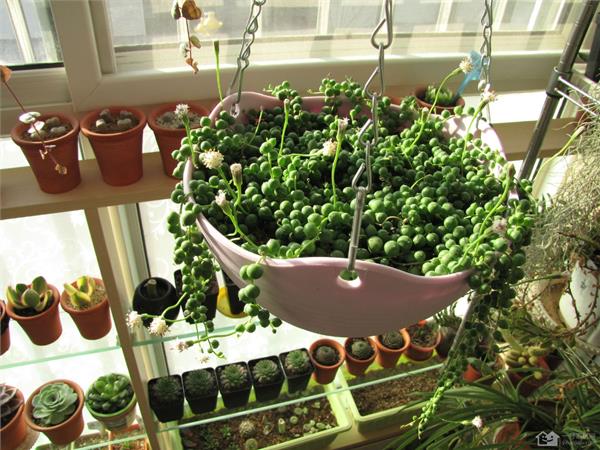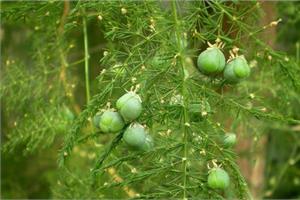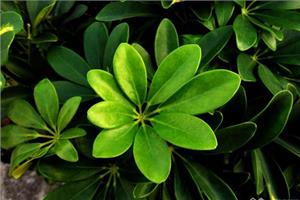How to plant pearl orchids at home
Pearl spider orchid, also known as emerald pearl, originated in southern Africa, because it is a spider orchid plant, so widely cultivated all over the world. Let's take a look at how to grow pearl spider plants at home.

The pearl spider plant is named after its bulging, plump green oval leaves that resemble pearls. Also known as emerald beads, lover tears, buddha hanging orchid, emerald beads, green bell, green bell. The flowering period is usually from December of the current year to January of the following year.
Pearl spider plants like rich organic matter, loose fertile soil. It grows best in warm, humid air and strong scattered light. Summer should avoid high temperature, high humidity, otherwise it is easy to rot stem death, potted flowers can be placed in rainproof shade cultivation, autumn, plants resume growth, should increase light, and dressing liquid fertilizer, there are blue pearl spider orchid and brown pearl spider orchid.
Different flower species have different requirements for temperature and environment. Pearl spider orchid has certain requirements for environment. Pearl spider orchid prefers warm, humid and semi-shady environment. Likes organic, loose, fertile soil. It generally grows best in moderate light. However, the adaptability of pearl spider orchid is still relatively strong, more drought resistant and cold resistant.
Pearl spider orchid is a delicate plant, in summer should avoid high temperature, high humidity, high temperature, high humidity easily lead to pearl spider orchid rotten stem death. After autumn, the plants of Cymbidium margarita will resume growth, so it is necessary to increase light and fertilizer. In the process of cultivation, watering the pearl spider plant must remember the principle of drying rather than wetting. When the weather is dry, you can spray water on the leaves and vines to make up for the lack of moisture and keep the pearls green and full. Pearl spider plant avoid shade, avoid high temperature and humidity, exposure will burn beads.
Pearl spider orchid can be used to propagate, its branches are very easy to take root, cut a few branches in spring and autumn, bury half in loose sand, keep wet but do not accumulate water, about half a month or so can rise roots. Pearl spider plants can also be propagated by using small plants of walking stem fools. In the growing season, cut off the small plant beads on the stem, plant them in the culture soil or water, and transplant them in the hanging pot after the small plants grow roots.
Cultivation of Phalangium margaritum
1. Because the leaves are succulent and succulent, they are drought-resistant. One of the keys to success in cultivation is to water dry rather than wet. When the weather is dry, you can spray water on the leaves and vines to make up for the lack of water and keep the pearls green and full. More like half shade, exposure may burn beads, too weak light growth is not strong.
2. The root system of the plant is very shallow and can be planted in shallow pots. Generally, tile bottom holes are used, and a layer of cinder or coarse sand is laid to increase ventilation and water filtration (especially in the case of plastic pot planting now commonly used). The soil is best to use rotten leaf soil (autumn and winter tree leaves mixed with a certain amount of broken soil exposed to Yan Mao peptide). Mix in a certain amount of sand (soil: sand ratio is about 1:3).
3. It is warm and humid, cold resistant (it can withstand low temperature of 0℃ when cultivated in Jianghuai area), high temperature resistant, and the optimum temperature is about 20℃-28℃. It grows slowly at high temperature and low temperature, especially in the high temperature environment above 30℃. It should be watered and fertilized less, otherwise it is easy to rot roots, which is also one of the keys to successful cultivation.
4, vigorous growth in spring and autumn should be "thin fertilizer", often spraying 1-3‰ nitrogen fertilizer and potassium dihydrogen phosphate on the leaves is conducive to making the beads more green and plump, improve the ornamental value.
5. There are few pests and diseases. Aphids in spring are one of them. They should be wiped off or sprayed with 1500 times omethoate in time to kill them. Mites in summer and autumn are the second, and 1000 times dicofol should be used to kill them. Attention to ventilation and increased leaf humidity can reduce mite infection.
The above is the relevant introduction of this article, I believe you have read this also have a simple understanding, if necessary, you can continue to pay attention to No. 1 home network, to learn more information.
- Prev

What about the yellowing of asparagus leaves? the reason why asparagus leaves turn yellow
What about the yellowing of asparagus leaves? the reason why asparagus leaves turn yellow
- Next

Matters needing attention in how to raise duck foot wood
Matters needing attention in how to raise duck foot wood
Related
- Wuhan Hospital Iron Tree Blooming Result Was Instantly Frightened by the Gardener Master
- Which variety of camellia is the most fragrant and best? Which one do you like best?
- What is the small blue coat, the breeding methods and matters needing attention of the succulent plant
- Dormancy time and maintenance management of succulent plants during dormancy
- Minas succulent how to raise, Minas succulent plant pictures
- What are the varieties of winter succulent plants
- How to raise succulent plants in twelve rolls? let's take a look at some experience of breeding twelve rolls.
- Attention should be paid to water control for succulent plants during dormant period (winter and summer)
- Watering experience of twelve rolls of succulent plants
- Techniques for fertilizing succulent plants. An article will let you know how to fertilize succulent plants.

